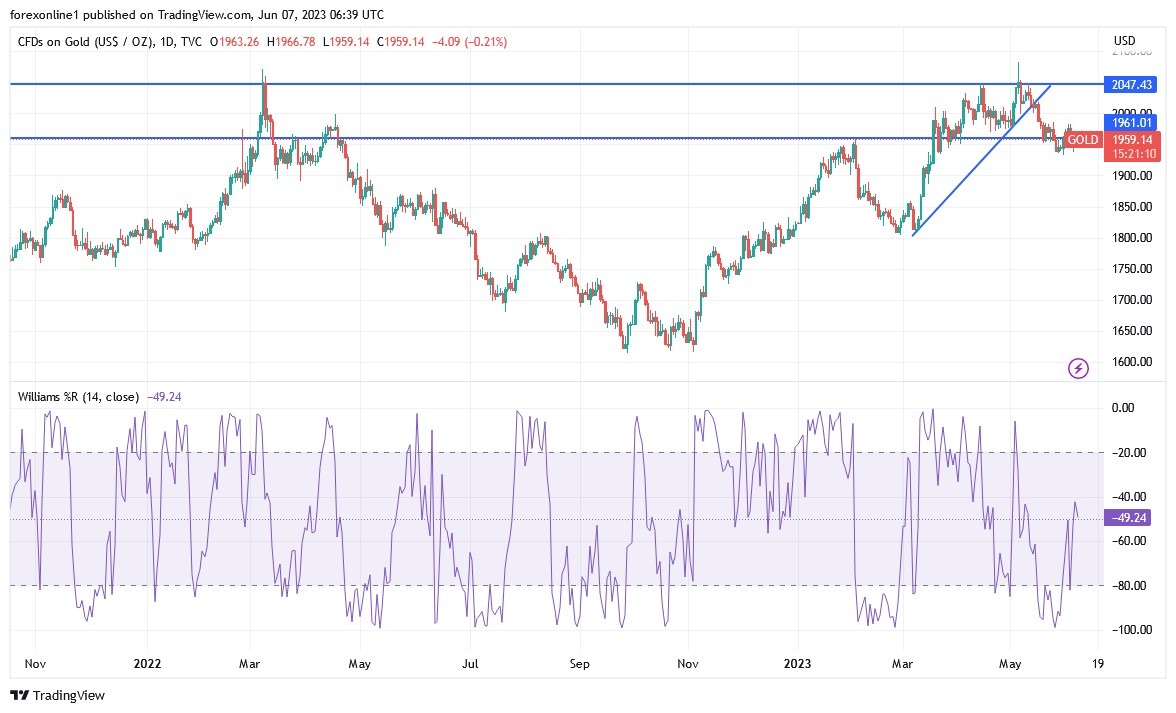Since the start of this week’s trading, the XAU/USD gold price has been trying to stop the pace of its recent losses. The losses affected the support level at 1938 dollars an ounce. It attempts to rebound upwards, reaching the resistance level 1966 dollars an ounce, before settling around the level of 1955 dollars an ounce, at the time of writing the analysis. The gold market has been affected recently by the level of the US dollar, the increase in global geopolitical tensions, and the future tightening of global central banks.
Global demand for gold
World Gold Council data revealed that in the first three months of the year, central banks bought a total of 228 tons, the highest number ever in the first quarter. This comes on the heels of what was already a record year in 2022, in which 1,136 tons of gold worth about $70 billion were added to banks' reserves. Compared to 450 tons purchased during 2021, this is a whopping 152% YoY increase!
Top Forex Brokers
The pace and consistency with which global central banks are now accumulating gold is, as far as we know, unprecedented, given that they have been mostly sellers throughout history. But the recent transactional trend, particularly over the past 30 years, illustrates a dramatic shift in the official attitude towards gold. In the early 1990s and 2000s, central banks were constantly selling gold because strong economic growth during that period made bullion less attractive than currencies in many places. Some, like those in Western Europe, were even selling hundreds of tons annually!
Then came the 2007-2008 financial crisis, which resulted in a full 180 points in the official banks' approach to gold. From 2010 onwards, central banks have been net buyers on an annual basis. About 80% of central banks currently hold gold as part of their international reserves.
Why do central banks buy gold?
Central banks love gold because the metal is expected to hold its value in turbulent times, and unlike currencies and bonds, it is not dependent on any issuer or government. It also enables central banks to diversify away from assets such as US Treasury bonds and dollars. In the aftermath of what is considered the biggest financial crisis since the Great Depression, it would make sense to stock up on bullion for its safe-haven properties; But that may not tell the whole story.
As WGC data shows, central banks have been hoarding gold for more than a decade, even during periods when the global economy seemed relatively healthy. “It predates COVID. “It predates sanctions,” says Joe Cavatoni, senior market analyst at WGC, referring to the next wave of crises that has sparked safe-haven demand.
The main driving force behind the new wave of buying gold was the so-called “emerging / developing market economies”, which operate a little differently from Western banks as their economies are exposed to greater risks during geopolitical conflicts, and they also tend to distrust US dollar reserves and buy a lot of gold to give up US dollars. Where it is not surprising, then, to see Russia and China are the most aggressive buyers of gold in recent years, accounting for about half of the total tonnage bought worldwide over the past two decades. Behind them was Türkiye, which increased its purchases to the world's leading 148 tons last year.
It is worth noting that gold buying statistics such as those above only reflect what is reported by central banks; Analysts believe that there is probably much more gold being bought by countries like Russia and China than is being advertised. The rationale behind these purchases, according to industry experts, is protection from foreign forfeiture, as many of these banks want to hold on to more bullion as a buffer against any current or future sanctions. For example, the Russian Central Bank can use gold to replace the US dollar (ie “de-dollarization”) and circumvent Western sanctions when it comes to international trade.
XAU/USD gold price forecast today:
According to the performance on the daily chart below, the gold price, XAU/USD, is in a stage of reversing the recent bearish outlook. The strong bulls may regain control of the direction of gold, in the event that prices move towards the 1985 resistance levels and the psychological top of $2000 an ounce again. On the other hand, the bears’ control over the direction of gold will strengthen in the event that prices move towards the support levels of 1935 and 1918 dollars, respectively. The fate of the gold price will continue to depend on the performance of the US dollar, the future of tightening the policy of global central banks, fears of global economic recession, and the interaction of investors with any new developments regarding global geopolitical tensions.
Ready to trade our Gold price forecast? We’ve made a list of the best Gold brokers worth trading with.

